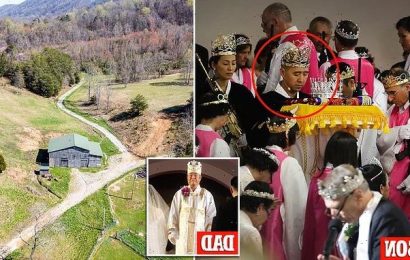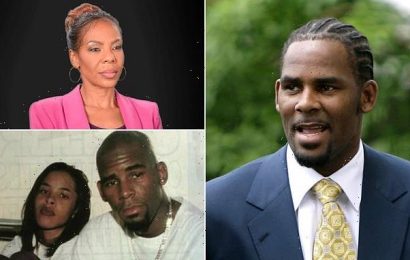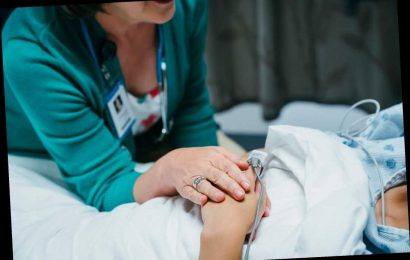THE brutal murder of Stephen Lawrence in 1993 shocked Britain.
Here, we look at who he was and what happened to him.
Who was Stephen Lawrence?
Stephen was born on September 13, 1974, at Greenwich District Hospital in South East London to Neville and Doreen Lawrence.
He had two younger siblings – Stuart and Georgina – and the family grew up in Plumstead, South East London.
They attended Trinity Methodist Church in Woolwich, where Stephen was christened.
Stephen's character at home and school was shaped by an ethos of tolerance, religious faith and education.
READ MORE ON STEPHEN LAWRENCE

Monster who murdered elderly couple convicted of rape with uncle of David Norris

Stephen Lawrence murder suspect to be freed from prison in weeks
By the age of seven, he had resolved to become an architect – a career path he never deviated from.
Stephen also excelled out of the classroom. He was an active member of the Cambridge Harriers Athletic Club and once ran for Greenwich.
At the time of his death, aged 18, he was studying A-levels in English, craft, design and technology, and physics at Blackheath Bluecoats Church of England School.
What happened to him?
Stephen was stabbed to death in an unprovoked attack in Eltham, South-East London, in a case that rocked the country.
MOST READ IN NEWS

Police say there's still no evidence of crime in Nicola Bulley's disappearance

Nicola deemed a 'high risk' missing person because of 'vulnerabilities'

Son reveals moment he found mum & sister dead on floor of burger van

Nicola Bulley cops to give major update on search for missing mum today
The black teenager was murdered as he waited at a bus stop with his friend Duwayne Brooks on April 22 1993.
What followed was a years long battle for justice led by Stephen's family and judicial reviews that led to intense scrutiny of the Metropolitan Police.
The day after the killing a letter naming suspects was left in a phone box.
In May and June 1993 police arrested five suspects and charged two, but the charges were dropped a month later with cops saying Duwayne's ID evidence was unreliable.
The following year the CPS again refused to prosecute suspects, despite new evidence being brought forward.
Stephen's angry parents launched a private prosecution against Gary Dobson, Luke Knight and Neil Acourt, but it failed in 1996 when Duwayne's ID evidence was declared inadmissible.
In February 1997 an inquest ruled that Stephen was killed in a "completely unprovoked racist attack by five youths".
The following day the Daily Mail named suspects as Stephen's killers on its front page and invited them to sue the paper.
In May 2011 Gary Dobson and David Norris finally faced trial for Stephen's murder following a review of forensic evidence that found the victim's DNA on the defendants' clothes.
Both received life sentences with Dobson jailed for a minimum of 15 years and two months and Norris for 14 years and three months.
Stephen's mum Doreen and dad Neville campaigned tirelessly for justice and policing reforms following his murder and his mum is now a Baroness sitting in the House of Lords.
Who were Stephen Lawrence's killers?
Only two men have been convicted of killing Stephen Lawrence – David Norris and Gary Dobson.
The judge at their trial described the attack as a "crime committed for no other reason than racial hatred".
Mr Justice Treaty continued: "A totally innocent 18 year old youth on the threshold of a promising life was brutally cut down in the street in front of eye witnesses by a racist thuggish gang.
"You were both members of that gang. I have no doubt at all that you fully subscribed to its views and attitudes."
At the time of the killing Norris, then 16, was living in a gated home thanks to his drug baron dad – but when arrested in 2010 he resided in a bedsit selling scrap metal.
In 1994, police using covert surveillance on Dobson captured Norris spewing vile racist language in a shocking rant.
In 2002 he had been jailed for 18 months for a racist attack on an off-duty black police officer.
Dobson, who was 17 at the time of the attack, lived on the Brook Estate in South-East London.
In 2010 he had been jailed for five years for drug dealing.
The Met have continued to appeal for information that could identify other suspects in the case in the hope of bringing further prosecutions.
However, in August 2020 police announced they were shelving the investigation as they had no further lines of inquiry, and that the case had now moved to an "inactive phase".
Met Police chief Cressida Dick said: "The investigation has now moved to an 'inactive' phase, but I have given Stephen's family the assurance that we will continue to deal with any new information that comes to light.
"The investigation into Stephen's murder will also be periodically reviewed for any further investigative opportunities which may arise; for example, with advances in technology."
What did the Macpherson report conclude?
The damning Macpherson Report was published in February 1999 and accused the Metropolitan Police of "institutional racism".
Carried out by retired High Court judge Sir William Macpherson, the report was ordered by then-Home Secretary Jack Straw.
Macpherson gave 70 recommendations for the force aimed at improving attitudes and hiring more black and minority officers.
The report has since been regarded as a watershed in British race relations.
It also suggested the partial revocation of the double jeopardy rule that prevented a person being tried twice for the same crime in instances where substantial new evidence had come to light.
Source: Read Full Article








